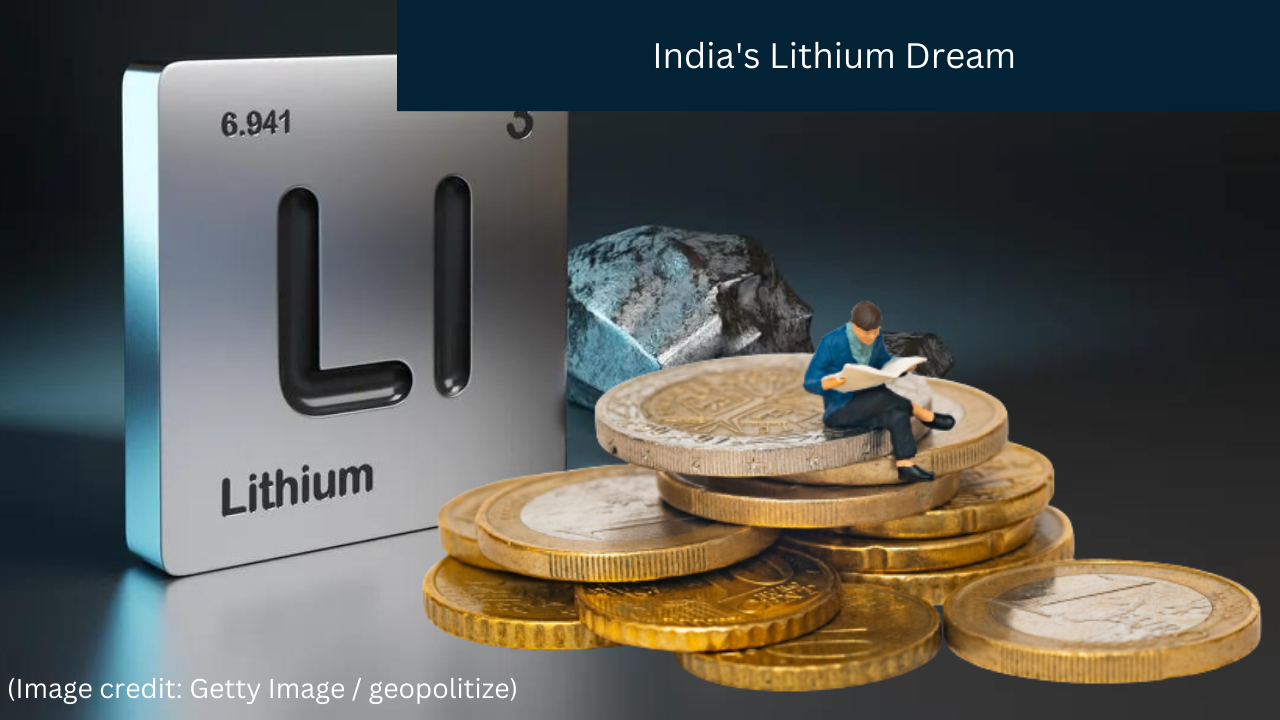
Economy
India's Dream Of Green Economy and Energy: 5.9 Million Tonnes of Lithium Discovery In Jammu and Kashmir And Economic Benefit of India
India is leading the way in making the world clean and green by promoting green energy generation through budget allocation and implementing processes and procedures to generate green energy in a more reliable manner.
The Indian government will promote green energy through the 2023 budget by providing a credit guarantee for the MSME sector to those involved in promoting green energy within India's geographical boundaries.
The Indian government has already taken commendable steps, such as the International Solar Alliance, which has 123 members, and will promote solar energy to countries located between the Tropics of Cancer and Capricorn.
This is not an isolated step, some other steps have already been taken such as the Indian government's decision to make India the "Net Zero Emission Country" by 2070 and to produce 40% of the country's power generation by using renewable energy.
These are the steps to reduce India's carbon footprint from only 1.8 tonnes per capita to nearly zero, while the United State's carbon emission is 14.7 tonnes per capita, and China's emission is 7.6 tonnes per capita.
India's Lithium Discovery:
India's goal of achieving net zero emissions will be much easier to achieve, With the discovery of lithium metal in Jammu and Kashmir.
The Geological Survey of India recently discovered a lithium deposit in J&K's Salal-Haimana area of the Reasi district as a result of fieldwork conducted by the GSI from 2018 to 2020.
This will benefit India's automobile, phone, battery, solar cell manufacturing, and wind power industries by addressing the country's lack of lithium storage and its widespread reliance on Australia, Chile, Bolivia, the United States, Argentina, and China.
Right now, India is in a transition mode to move from fossil fuel to renewable energy, and India's car manufacturing industry moving from conventional petrol, and diesel to Lithium-ion batteries.
The discovery of Lithium will revolutionize the Indian economy as well as the lifestyle of the people of the nation.
However, the identification of Lithium is still in its early stages. According to the Mines and Minerals (development and exploration) act, 1957 the confirmation of discovery is yet to be confirmed because there are four states, according to the act, the discovery is in still the G3 stage, which is called the "Preliminary Exploration Stage".
Any mineral discovery goes through four stages. G4 is known as "Reconnaissance Mineral Resources," G3 is known as "Preliminary Exploration," G2 is known as "General Exploration," and G1 is the final stage, which will provide detailed exploration results and will calculate the total measured mineral resources.
Globally, there are 98 million tonnes of Lithium around the world, and only 26 million tonnes has explored yet and are in use, after the discovery of India's 5.6 million tonnes reserve India achieved 5% of the world's total reserve.
Lithium is very critical for harnessing green energy and it will revolutionize the world economy as well as India's economy.
How Lithium will change India's global dominance in the world economy?
India has a massive population of 1.4 billion people, and this massive population requires massive energy to run their daily lives, which is why India is one of the world's largest importers of crude oil and gas from other parts of the world, with the Middle East and Russia being likely choices.
To import energy from countries India needs a large amount of forex reserve and India spends its lion's share of it on importing energy, semiconductor chips, and Lithium.
If India fully exploits the lithium resource site, it may shift its energy scenario from being the largest importer to the largest exporter of energy, and India has the full potential to achieve this goal because the Indian government is providing subsidies as well as easy credit for industries those are getting involved in green energy production facility.
Also, This will allow India to achieve its goal of becoming the world's third-largest economy by 2035, well ahead of the World Bank's 2047 deadline. Even before most advanced nations planned to go green, the Indian government set a goal of going green.
Indian Government Plan to go green:
India already is a power surplus nation and it exports its energy to the neighbouring countries because India's total installed electricity capacity is over 4 lakh MW.
Because of India's sustainable development goal, India is shifting towards renewable energy from conventional energy primarily coal.
India is the 3rd largest producer of renewable energy in the world after the United States and China, according to the global status report on renewable energy.
India has set the target of producing 500GW of green energy by 2030. The target of solar energy has been set at 48.55GW, the wind at 40.03GW, Small Hydro at 4.83GW, Large Hydro at 46.51GW, Nuclear at 6.78GW, and biopower at 10.62GW.
In near future, India will produce 50% of its energy from renewable by reducing one billion tonnes of carbon footprint. India will reduce its emission target by 45% of its GDP by 2030 and will make India more green and suitable for living.
Reduced emissions will lower the population's mortality rate while also increasing the population's life expectancy.
India's goal is to make the world more reliable for any life by making the world greener and for that India not only going for Lithium, it is also promoting green hydrogen projects.
In 2013, India launched the National Green Hydrogen project to make India the world's largest green hydrogen-producing hub. This year, the Indian government announced its plan to make the railway system more environmentally friendly by using hydrogen to power the railway.

0 Comments